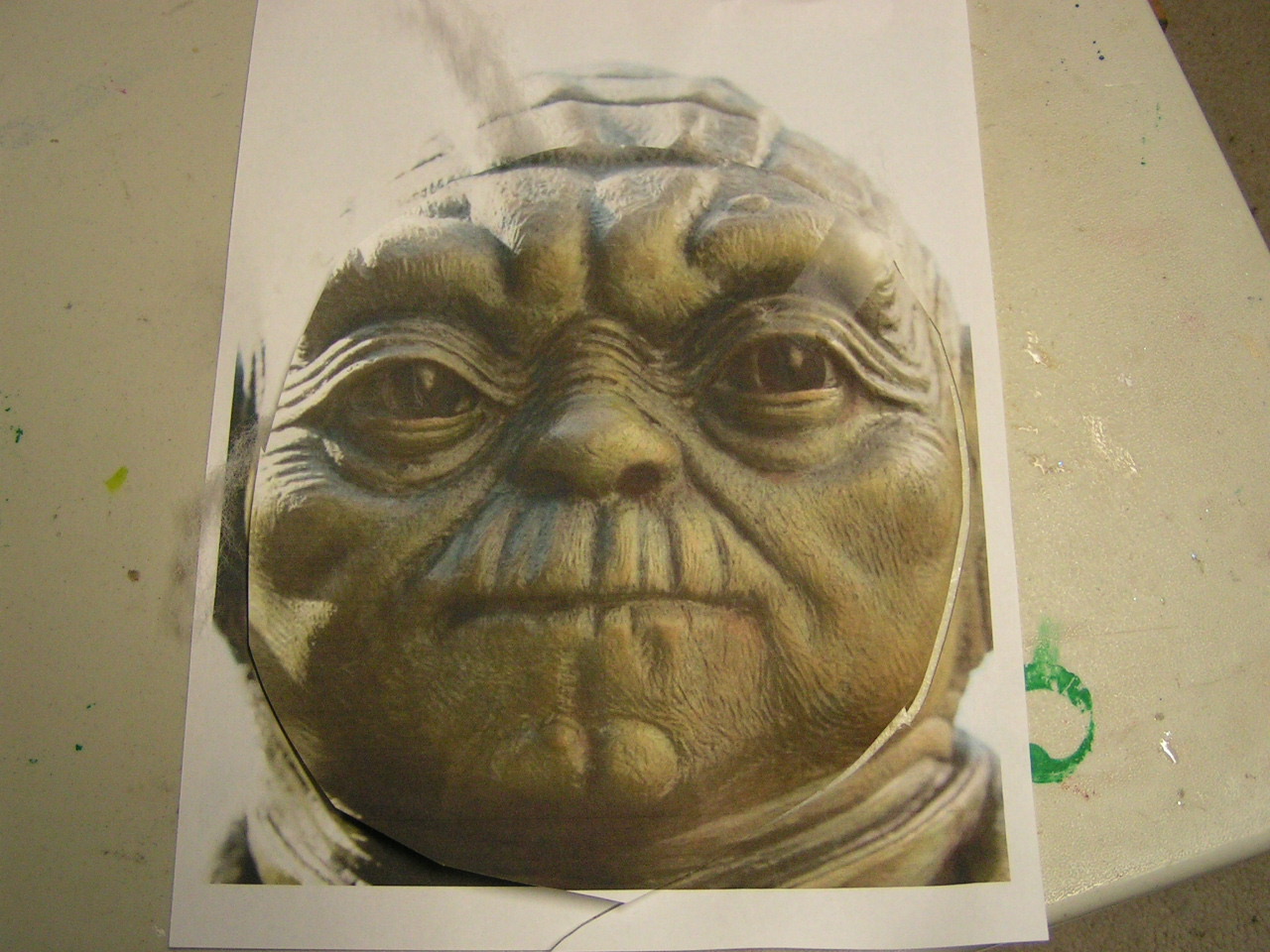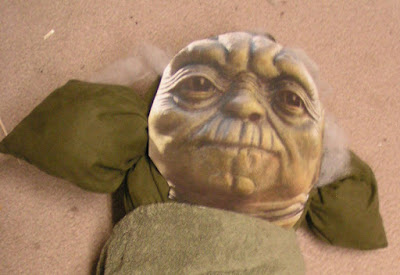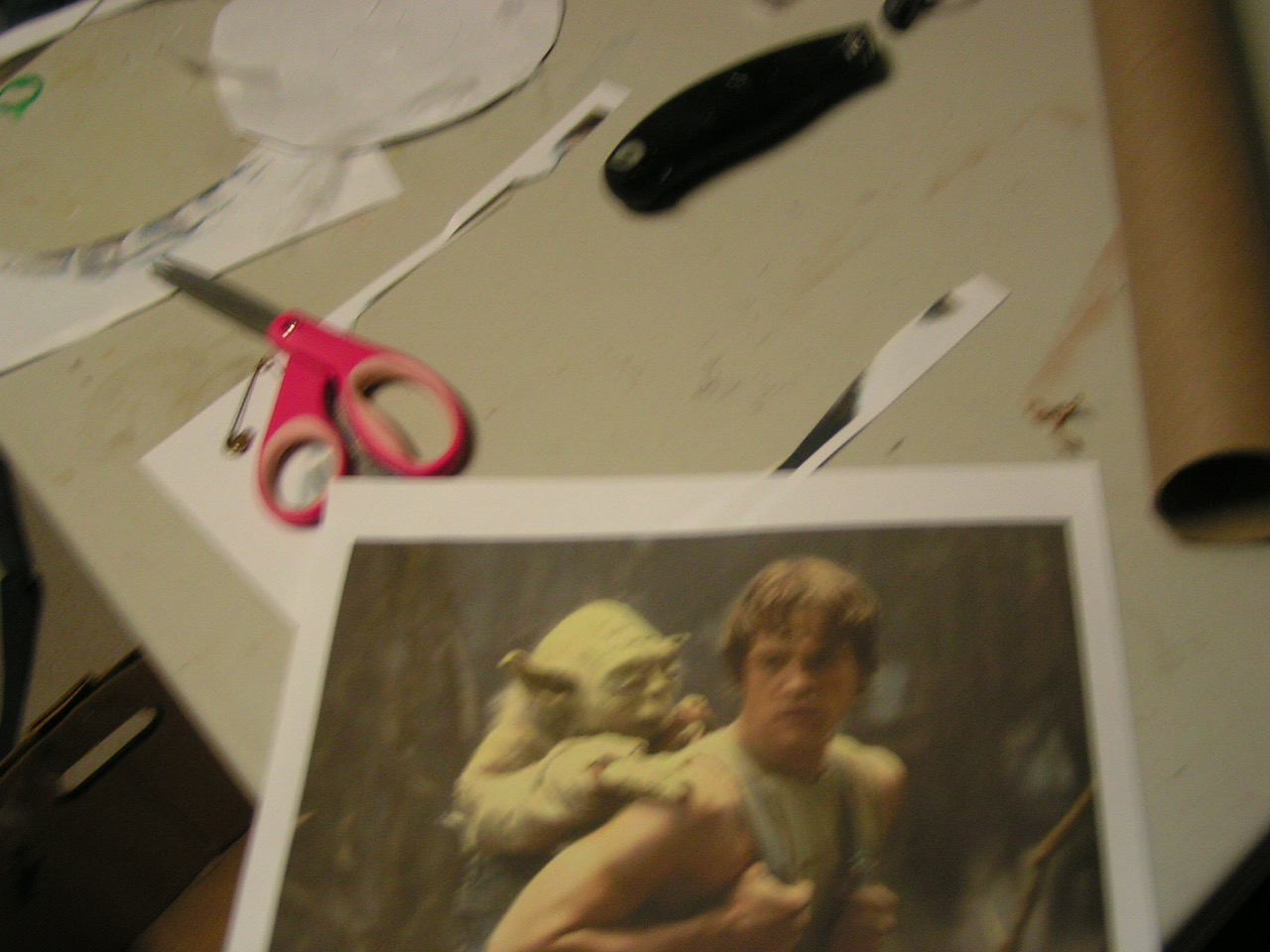HI All-
It’s Purim* which means it’s time for a costume and this year’s theme is Star Wars. Unfortunately, in March Goodwill is lacking in costumes, and I don’t want to spend a lot of time or money getting one. I googled Star wars and found this photo which gave me an idea:
All I needed was a Yoda doll and a backpack, but Goodwill had no Yoda dolls either. Instead, I bought a square green pillow for $4 and here’s what I did:
1. I gathered opposite corners of the pillow and rubber banded them into “ears”.
2. I unzipped the pillow a little and stuck a cardboard wrapping paper roll inside to make a “neck” and spine which I wrapped with a green towel pinned at the “neck” of the pillow-head. (The cardboard roll while not necessary, gave the head and body good support.)
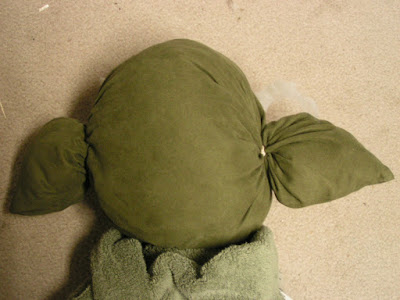 |
| Doesn’t it already look like YODA? |
3. After googling “high resolution image Yoda face, I printed and cut it out.
4. I then applied the Best glue Ever to the back of the face. Notice, I put on a much thicker amount of glue than I would use when making cards or layouts. This extra glue wasn’t actually necessary, but I wasn’t sure how it would stick to the thick nap of the pillow fabric, so I applied it thicker than normal.
5. SINCE I might want to actually use the pillow or donate it back, I decided to let the glue dry to clear and tacky before pressing it onto the pillow. This would make the glue re-positionable and I’d be able to remove the face easily.
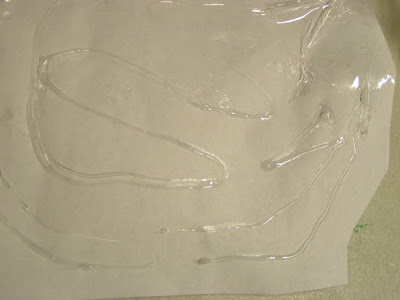 |
| See how the glue dried to clear? |
6. I adhered a few wisps of pillow stuffing the the back of the face to mimic Yoda’s fuzz.
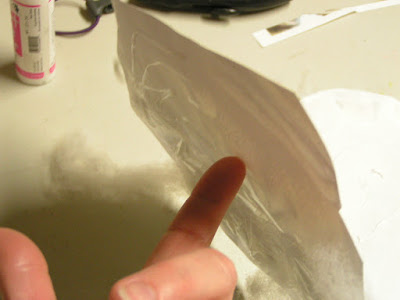 |
| When dry, the glue is not only clear, but VERY, VERY tacky! See it sticking to my finger? |
7. Then I used the velcro tabs on a pair of green gloves to attach them onto the backpack straps so it looks like Yoda is hanging on to my shoulders.
The costume was a hit and people actually recognized I was “Luke Skywalker in Training”!
(And wouldn’t you know I’m not going to remove the face after all as I’m going to save it for Halloween!)
WET OR DRY? SOME THOUGHTS ABOUT the BEST GLUE EVER™ ON FABRIC
If you are wondering whether you should you use the Best Glue Ever “wet” or wait for it to dry, I’ll start by saying it depends upon several things.
For one, it depends on whether you see the other side of the fabric. In this case that wouldn’t matter since the other side of the fabric is inside and can’t be seen. But if you are adhering a satin ribbon to a paper card, you won’t want the glue bleeding through the ribbon, so let the glue at start to dry. (You may not need for it to be completely clear.)
It also depends upon the fabric since the thinner the fabric (and the heavier the application of the glue), the more likely the glue will bleed through.
Finally, the BEST GLUE EVER™ gets tackier as it starts to dry and so it will actually hold better to fabric when it is allowed to at least start to dry. If you let it dry all the way to clear, it will be re-positionable; but keep in mind that the thinner the layer of glue and the longer the glue sets, the more less tacky and more re-positionable it is and likewise, the less dry it is and the thicker the layer of glue, the more permanent it is.
Letting the glue start to dry is important in other situations such as the use of charms and buttons, making homemade glue dots, and re-stickying your electronic die cutter mat, adhering vellum and transparencies. I have many videos about this on the website, but if you have any questions…please, PLEASE ASK!
* PURIM is a Jewish holiday commemorating the defeat of Haman’s plot to massacre the Jews in ancient Persia. The story is recorded in the book of Esther where it is decried that Jews should commemorate the Jewish People’s delivery from annihilation with a holiday of feasting and gladness, sending portions to one another, and gifts to the poor. Today, Israelis dress in costumes to go to work, to synagogue, and to parties, and kids dress up for school although ironically, costumes and masks aren’t ever mentioned in the Book of Esther (or in any of the codifications of Jewish law or in the writings of the biblical scholars of the Middle Ages). Italian Jews in the 14th century and may have first added this component to the feasting and celebrating when the Christians around them were celebrating the Feasts of the Epiphany with carnivals and merriment on Fat Tuesday before Lent.


